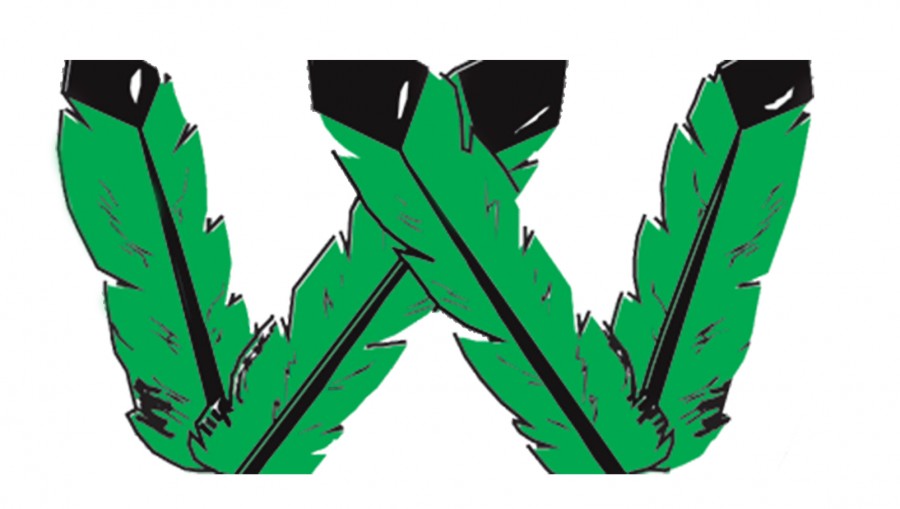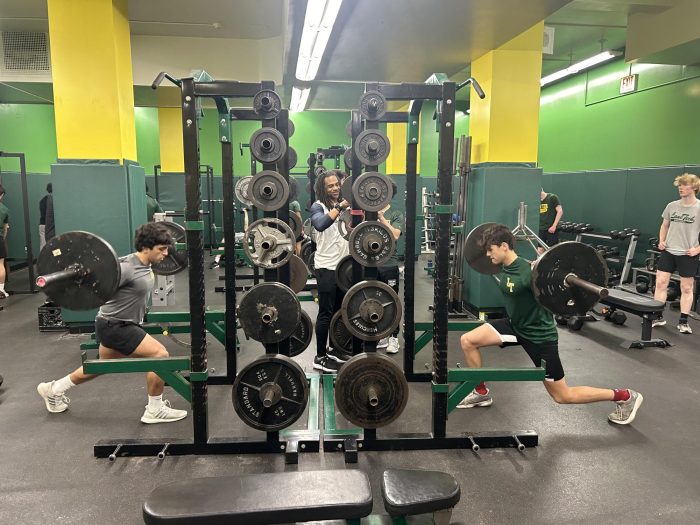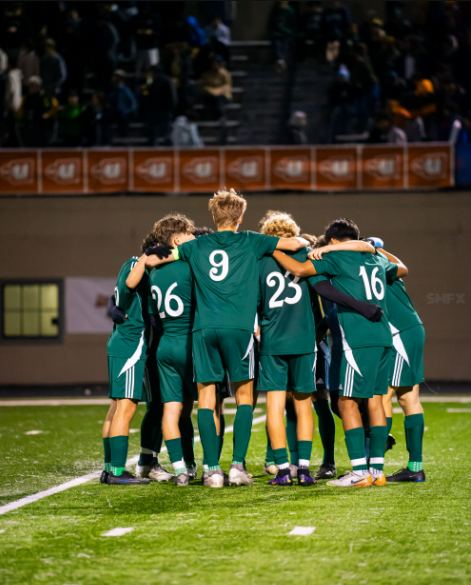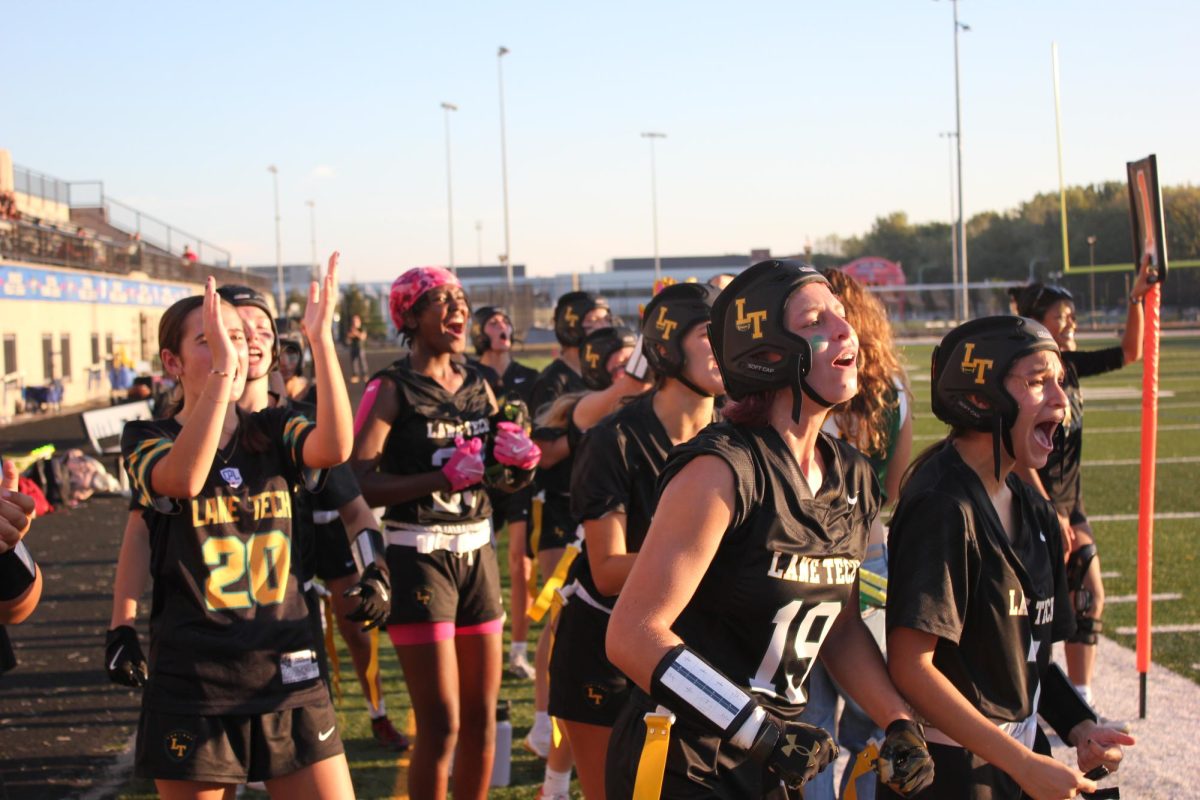By Sandra Campos
Nike-clad feet pound outside on the melted snow, bats strike baseballs with a loud CRACK, crosses snag lacrosse balls out of the air. Spring sports are back at Lane, bringing with them the dreaded sports injuries! Injuries range from slight bruising to sprains to fractures and tearing of the joints, and affec both athletes’ daily lives and their sports careers. But for Anastasia Niforos, Div. 582, Caitlin Acevedo, Div. 559, and Sabrina Mendoza, Div. 471, determination is the way to beat the burdens and blues of sports injuries!
Niforos has been playing soccer since she was five years old and ran cross country since the 7th grade. In October, Niforos tore her ACL during a soccer game with her travel team.
“I was playing in my soccer game. I was going for the ball and jumped in the air a little, when this girl, who just came in, cleated me on the inside of my leg and I heard it pop,” Niforos said. “I was then told I’d torn my ACL and just burst into tears.”
Niforos’ injury prevented her from playing in soccer games, scrimmaging with her team, and set her back in wanting to play for college.
“I’m trying to get to play soccer in college. I was going to do soccer camps in the winter in front of coaches and since [the injury] happened, I couldn’t. Now I have to do them in the summer,” Niforos said. “As for daily life in general with a torn ACL, it was a pain, every single day with it.”
“I was super upset and honestly, really scared. Once I got the surgery to fix my ACL, I was pretty depressed for about a month,” Niforos said. “But I knew I had to stay positive. My friends, family, coaches and physical therapists definitely helped a lot. I also realized that some people have it worse than I do.”
“It helps staying determined and focused on getting better and back on the soccer field!” Niforos said.
Niforos’ injury to her ACL has not held her back from applying for athletic scholarships and getting the attention of several universities.
“Coaches will start to watch me play again and by that time, I will be 100% better by then. They’ve emailed me about camps I should go to and I’ve been invited to some too,” Niforos said. “I’ve received emails from the University of Iowa, College of Charleston, and University of Pittsburgh, along with many Division 2 and Division 3 schools.”
Niforos’ was not the only one to have a hard soccer season this fall. During her soccer season, Acevedo pulled her hamstring and strained a ligament in her knee.
“Being on crutches for a couple of days and the pain was the worst thing I have ever experienced,” Acevedo said. “I think I was more stressed, since soccer and running are really good stress releases for me. I was really anxious to get better.”
“Thankfully, the injuries didn’t make everyday life difficult at all. I was still able to do basically everything I do on a daily basis except sports,” Acevedo said.
Lane’s track team has also had its share of injured athletes. Mendoza runs cross country and track and field and has been suffering from leg and hip injuries since sophomore year.
“Sophomore year was when my first real injury occurred,” Mendoza said. “From then, it set off a sort of chain reaction [of injuries].”
During cross country season, Mendoza suffered a stress fracture in her left foot in her sesamoid, bone embedded within a tendon, and was in a boot for that season of cross country. But Mendoza did not let her boot-confined foot stop her during the season.
“I went to practice everyday and even biked with the boot on. Even though I couldn’t walk. I trained hard because I knew I had to be better for track season,” Mendoza said.
But these were the least of Mendoza’s worries.
“Being in a boot caused a hip imbalance because for 3 months I was walking with one hip higher than another,” Mendoza said. “Ever since then, my legs have been weaker and I have calf strains, various forms of tendinitis in my foot, achilles [tendon], and IT band.”
Mendoza’s injuries made it hard for her to complete an entrie track or cross country season without being injured. She fell behind the rest of her team, which made her work harder to catch up. Her injuries also made daily life in general more difficult.
“Having the boot on was tiring throughout the day and it was difficult to get around the school, with it being hard enough as it is,” Mendoza said. “It was awkward going from geometry to French with Mr. Polley to the range building outside. I was always late and the teachers had already started class by the time I got there. And I made a lot of noise struggling to get into my seat.”
Her injuries temporarily set her back from scholarship opportunities.
“It [the injuries] prevented me from performing to the best of my abilities, which reflects poorly to college coaches, since they don’t always know what’s happened to me,” Mendoza said. “But they contacted me and took the time to talk to me about what’s happened and it’s made them more understanding.”
Now Mendoza can apply to the universities that interest her like Missouri, Illinois, DePaul, Marquette, and Iowa.





